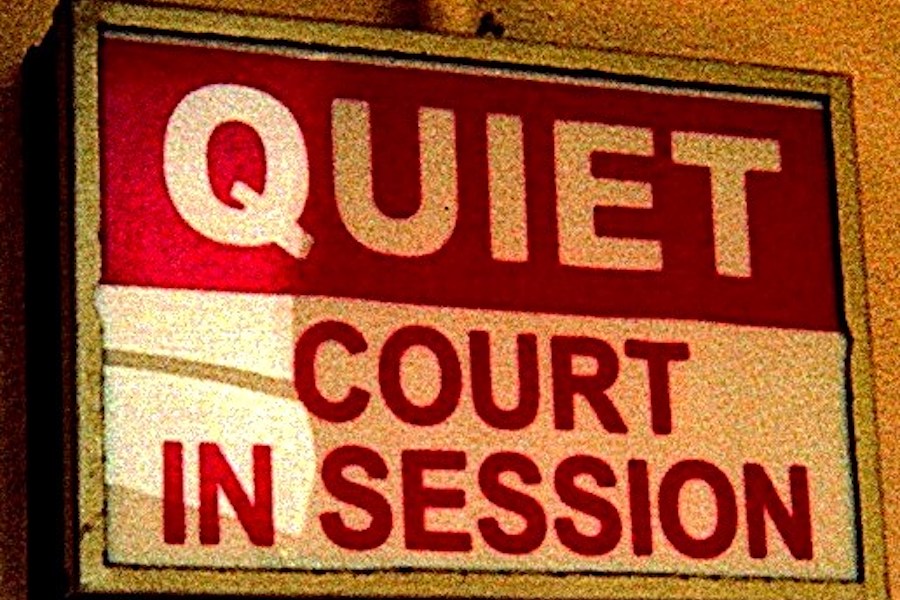
Modonese v Delac 2011 BCSC 82, affirmed by the Court of Appeal at 2011 BCCA 501, provides a summary of the law re hearsay evidence.
Hearsay: General Principles
[79] The Supreme Court of Canada has repeatedly endorsed a principled approach to the admissibility of hearsay evidence. This approach is set out in R. v. Khelawon, 2006 SCC 57 at para. 2, [2006] 2 S.C.R. 787 [Khelawon]:
… When it is necessary to resort to evidence in this form, a hearsay statement may be admitted if, because of the way in which it came about, its contents are trustworthy, or if circumstances permit the ultimate trier of fact to sufficiently assess its worth. If the proponent of the evidence cannot meet the twin criteria of necessity and reliability, the general exclusionary rule prevails. The trial judge acts as a gatekeeper in making this preliminary assessment of the “threshold reliability” of the hearsay statement and leaves the ultimate determination of its worth to the fact finder.
[80] As set out in R. v. Mapara, 2005 SCC 23 at para. 15, [2005] 1 S.C.R. 358, and repeated in Khelawon, the framework for assessing hearsay evidence is as follows:
(a) Hearsay evidence is presumptively inadmissible unless it falls under an exception to the hearsay rule. The traditional exceptions to the hearsay rule remain presumptively in place.
(b) A hearsay exception can be challenged to determine whether it is supported by indicia of necessity and reliability, required by the principled approach. The exception can be modified as necessary to bring it into compliance.
(c) In “rare cases”, evidence falling within an existing exception may be excluded because the indicia of necessity and reliability are lacking in the particular circumstances of the case.
(d) If hearsay evidence does not fall under a hearsay exception, it may still be admitted if indicia of reliability and necessity are established on a voir dire.
[81] There are three important points to keep in mind when applying the principled approach to hearsay:
1. The onus is on the party tendering the hearsay evidence to establish necessity and reliability on a balance of probabilities: Khelawon at para. 47.
2. The principled approach should not be compartmentalized, but rather should be considered as a continuum between necessity and reliability. In particular, “there may be instances where the necessity is so great – such as where the declarant is dead – that some elasticity on the issue of reliability may be given”: Roussin v. Bouzenad, 2005 BCSC 1719 at para. 14, [2005] B.C.J. No. 2682.
3. The principled approach is not based on fixed criteria, but is applied case-by-case by identifying the relevant concerns and factors in determining admissibility.
(b) Traditional Exceptions
[82] In Pasko v. Pasko, 2002 BCSC 435, 100 B.C.L.R. (3d) 354 [Pasko], a dispute arose as to the admissibility of statements made by deceased parents to their children in connection with a dispute over whether property had been gifted to certain of the children. Halfyard J. noted at para. 10 that there is an “exception to the hearsay rule which permits evidence to be given of statements made by deceased persons as to their present state of mind (including intention), which statements need not be against interest, provided that the deceased person’s state of mind is relevant to an issue in the case.”
[83] Pursuant to this exception, Mr. Justice Halfyard admitted statements relating to the deceased parents’ intentions to confer a gift, made before and at the time of the two transactions in question.
[84] Following Pasko, if I am wrong in concluding that the statements concerning Regina’s intention to divide her assets equally are not admissible pursuant to s. 5 of the WVA, they ought to be admitted pursuant to this exception to the hearsay rule.
[85] Declarations of mental or emotional state are also an established exception to the rule against hearsay. In R. v. Smith, [1992] 2 S.C.R. 915, 94 D.L.R. (4th) 590 [Smith cited to S.C.R.], the Court held that the state of mind exception to the hearsay rule permits reception of evidence to prove the declarant’s state of mind, but not the truth of the factual assertion which may be contained in it. Statements attributed to a deceased declarant tending to show her state of mind, namely a fear of the defendant, are admissible under this exception to the hearsay rule: R. v. Evans, 2002 BCSC 1674 at para. 35, [2002] B.C.J. No. 3100.
[86] Accordingly, the statements attributed to Regina concerning her fear of the defendant and her fear of upsetting him are admissible pursuant to this exception.
[87] The defendant also objects to the admission of things he said out of court; for example, that he was heard in the background using abusive language, attempting to have his wife, Vera Delac, cease telephone contact with the plaintiff. If the plaintiff did hear the defendant make such statements, they are admissible at trial. In Jones v. Ma, 2010 BCSC 866, 6 B.C.L.R. (5th) 137, Ehrcke J. stated:
9 That issue was specifically addressed by the Ontario Court of Appeal in R. v. Foreman (2002), 62 O.R. (3d) 204 (C.A.). In that case Doherty J.A., delivering the judgment of the Court, said at pages 215 to 216:
Admissions, which in the broad sense refer to any statement made by a litigant and tendered as evidence at trial by the opposing party, are admitted without any necessity/reliability analysis. As Sopinka J. explained in R. v. Evans [1993] 3 S.C.R. 653, at page 664:
The rationale for admitting admissions has a different basis than other exceptions to the hearsay rule. Indeed, it is open to dispute whether the evidence is hearsay at all. The practical effect of this doctrinal distinction is that in lieu of seeking independent circumstantial guarantees of trustworthiness, it is sufficient that the evidence is tendered against a party. Its admissibility rests on the theory of the adversary system that what a party has previously stated can be admitted against the party in whose mouth it does not lie to complain of the unreliability of his or her own statements. As stated by Morgan, “[a] party can hardly object that he had no opportunity to cross-examine himself or that he is unworthy of credence save when speaking under sanction of oath” (Morgan, “Basic Problems of Evidence” (1963), pp. 265-6, quoted in McCormick on Evidence, ibid., p. 140). The rule is the same for both criminal and civil cases subject to the special rules governing confessions which apply in criminal cases. [Emphasis in original].
10 I agree with that statement of the law. It was adopted by our Court of Appeal in R. v. Terrico, 2005 BCCA 361. Admissions made by one party to litigation are generally admissible if tendered by the opposing party, without resort to any necessity/reliability analysis.
(c) The Principled Approach
[88] The statements referred to above under headings “a” and “e” (the physical altercation and the evidence that Regina did not know what Marko had asked her to sign) do not appear to neatly fit under any of the established exceptions to the hearsay rule. I now turn to a consideration of the “principled approach” to hearsay.
(i) Necessity
[89] The principle of necessity does not mean that the hearsay evidence must be necessary in order for a party to prove his or her case. As described by the Court in Smith at 933, the criterion of “necessity” refers to the necessity of the hearsay evidence to prove a fact in issue. To satisfy necessity, the party adducing the evidence must prove that hearsay is the only available means of putting that evidence before the court. Necessity is obviously made out in this case. If Regina’s statements are to be adduced at all, they can only be presented in hearsay form because of her death.
(ii) Reliability
[90] When assessing the reliability of a hearsay statement, the court should adopt a functional approach. Starting from the premise that hearsay statements are presumptively inadmissible, it should then search for indicia of trustworthiness sufficient to displace the general exclusionary rule. In each case, the focus of the inquiry must be on the particular dangers arising from the hearsay nature of the evidence: R. v. Blackman, 2008 SCC 37 at para. 42, [2008] 2 S.C.R. 298.
[91] This requirement can be satisfied in one of two ways: First, where there is an absence of any real concern about the truth of the statement because of the circumstances in which the statement was made; and second, where the truth and accuracy of the evidence can be sufficiently tested by means other than contemporaneous cross examination: Khelawon at paras. 62-63.
[92] All relevant factors and the context should be considered, including the presence of supporting or contradictory evidence in appropriate cases.
[93] In Anderson v. Anderson, 2010 BCSC 911, 58 E.T.R. (3d) 291 [Anderson], the pivotal issue in the trial was similar to that raised in the present case: Did the deceased gift the defendant the legal and beneficial interest in property absolutely through an inter vivos transfer? Accordingly, the actual intention of the deceased at the time of the transfer was of fundamental importance. On the issue of hearsay pertaining to this issue, Dardi J. held:
57 The reporting of some of the Deceased’s statements by interested parties raises a concern regarding the reliability of those statements. This evidence must be carefully scrutinized. Adopting the approach in Stephens v. Austin, 2003 BCSC 341, I have nevertheless determined that the Deceased’s statements adduced in evidence meet the threshold requirement of reliability. I conclude that the fact that some of the witnesses relating the statements are interested parties may be adequately dealt with in the determination of the weight to be attributed to any particular statement.
58 In my view, the real issue with some of the evidence and the weight to be accorded to it is whether the statements were in fact made by the Deceased. The Court must first find on a balance of probabilities that the statement was made before it goes on to determine the treatment and weight of such evidence: Creutz v. Winther Estate, 2007 BCSC 1463. In essence, this assessment turns on the reliability of the various witnesses: Halfpenny v. Holien (1997), 37 B.C.L.R. (3d) 186 (S.C.).
[94] Regina had no motive to fabricate the two statements attributed to her. They were not self-serving. The statements at issue were made in the context of everyday intimate conversations between close relatives and friends, which is an accepted indicator of reliability: R. v. Pasqualino, 2008 ONCA 554 at para. 43, 233 C.C.C. (3d) 319. The defendant has pointed to no evidence that would contradict these statements. Accordingly, the statements possess sufficient hallmarks of threshold reliability to justify admission under the principled exception.







